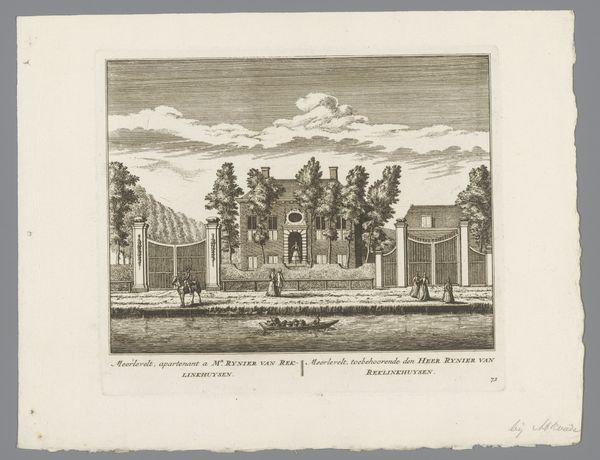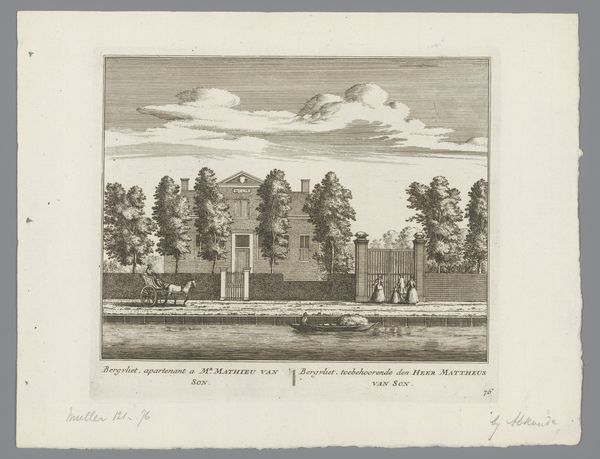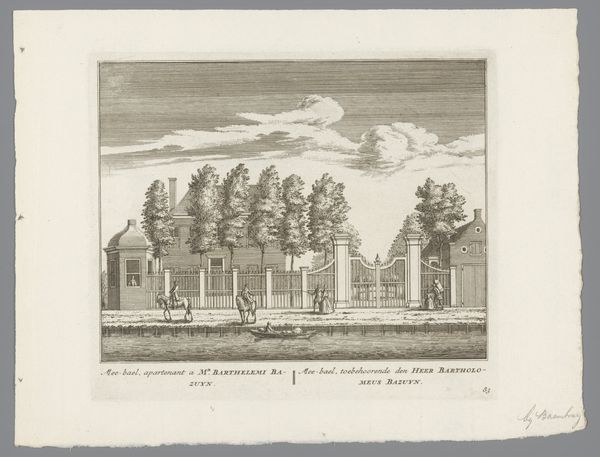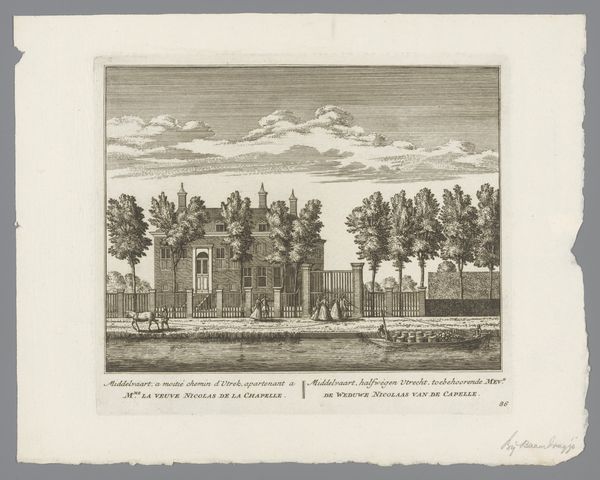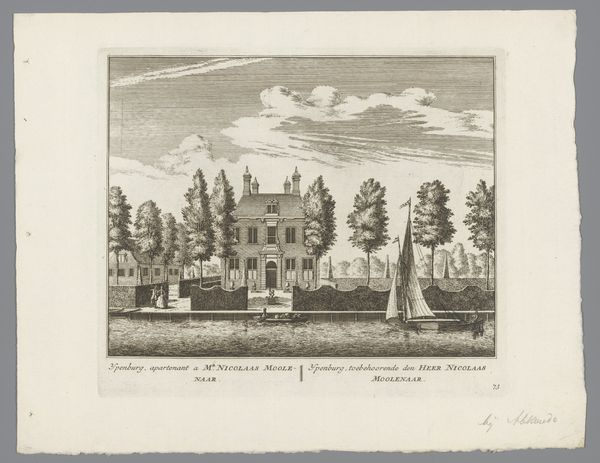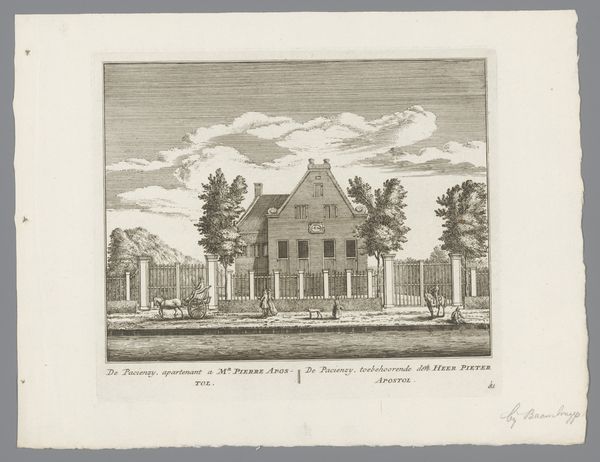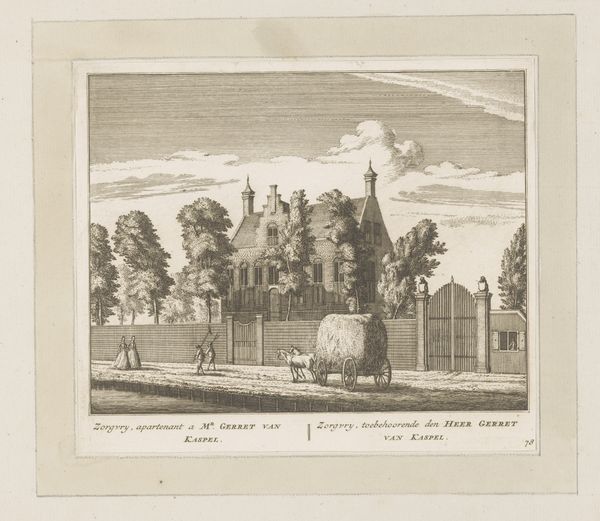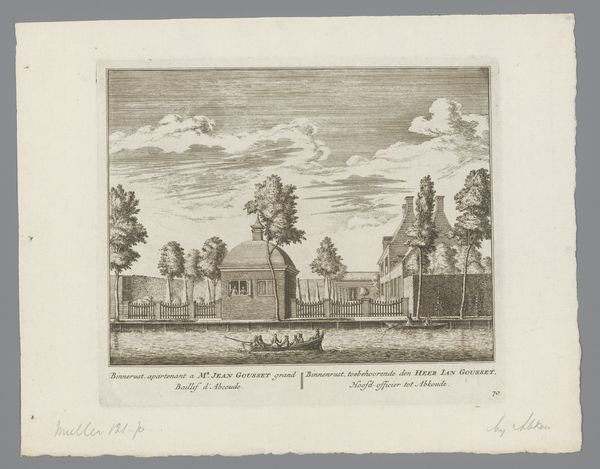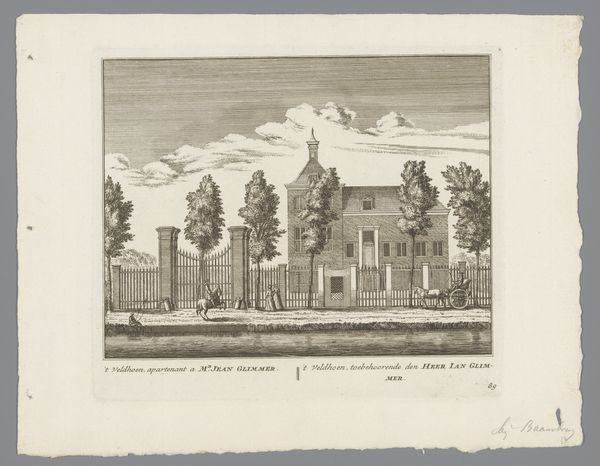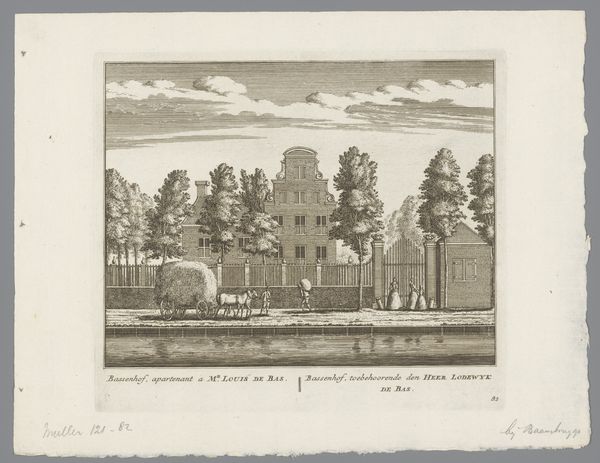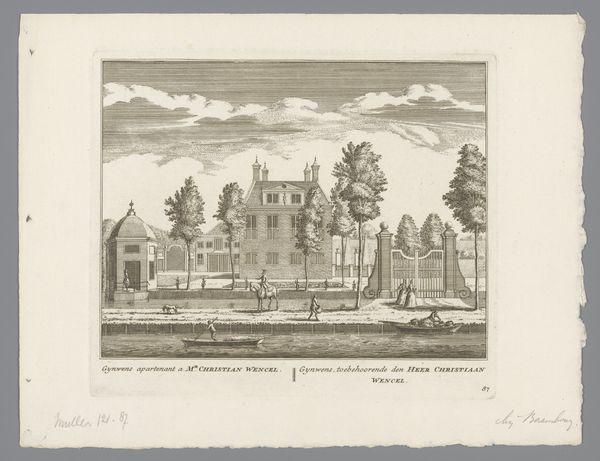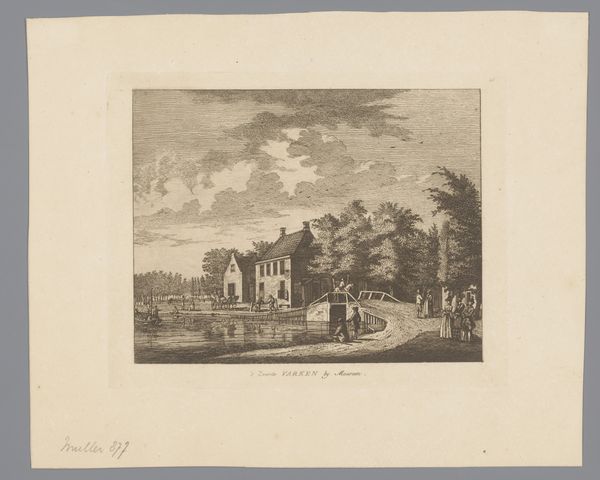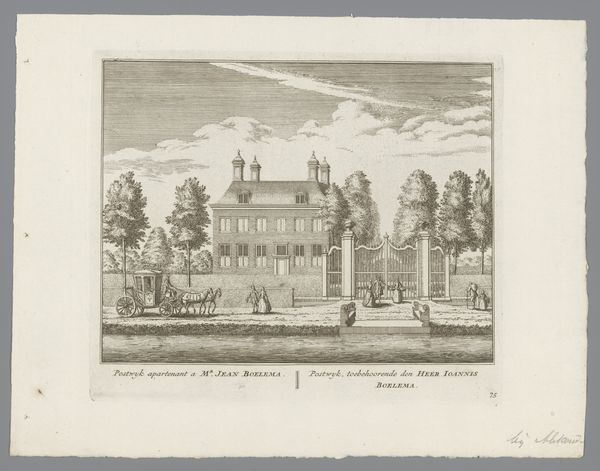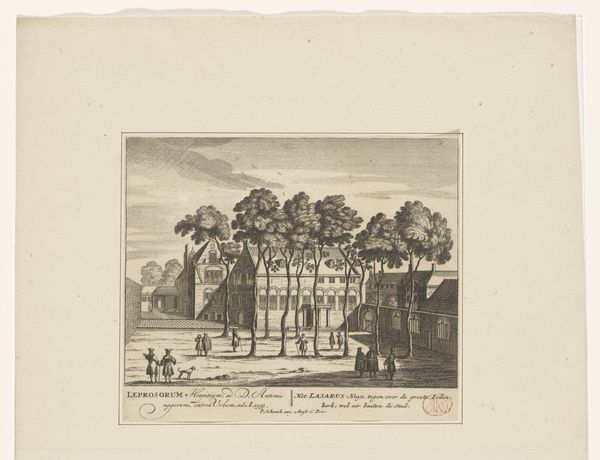
print, etching, engraving
#
baroque
#
dutch-golden-age
# print
#
etching
#
landscape
#
cityscape
#
engraving
Dimensions: height 171 mm, width 200 mm
Copyright: Rijks Museum: Open Domain
Curator: Look at this print by Abraham Rademaker, created around 1730. It depicts the estate “Lang Verzwegen” in Abcoude, Netherlands. I’m immediately drawn to the careful rendering of this landscape. Editor: The textures created with the engraving are striking, aren’t they? The way the artist depicts the various elements – the building itself, the water, the trees, the figures, and even the sky – it’s quite comprehensive. It almost reads as a catalogue entry for this wealthy estate. Curator: Exactly. And note how the estate is framed within the broader socio-economic landscape of the Dutch Golden Age. Country estates were potent symbols of status. We can think of it in terms of property ownership and landed gentry. Rademaker's work provides us with a glimpse into a highly structured world of power relations. It gives me space to interrogate power and gender constructs present at that time. Editor: Agreed. It emphasizes materiality and production - the cost of building and maintaining this kind of property speaks volumes. Consider the labor involved. I want to consider the socio-economic base required to afford such grand displays of wealth through landscape and architecture. How does this display intersect with gendered spaces? Who occupies the scene in this context? Curator: That's key. Look at the figures sparsely scattered in the landscape. There are laborers present, the implication of working-class support becomes even more apparent through careful interrogation of the materials at hand. I consider the construction as performative wealth and the political implications the print creates. Editor: So, for you, this image serves as a microcosm of the economic structures, and what this does for visibility and class tensions, while for me the medium reminds us to analyze the economic systems supporting artistic creation. Curator: Precisely! It prompts a multilayered discourse on representation and lived realities. Editor: Well, it’s definitely given me a lot to consider about how visual art engages with material conditions. Curator: And it reinforces for me the significance of scrutinizing historical images through a lens attuned to identity, power, and politics.
Comments
No comments
Be the first to comment and join the conversation on the ultimate creative platform.
